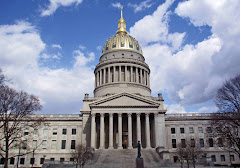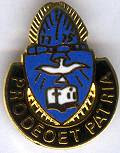De Soto National Memorial
For those of you who have been followers of this blog, particularly over the last 6 months, I have some news, its badness or goodness depends upon your perspective. I think that the sharing our 2008 trip to the Pacific Northwest is at an end. For those who have followed each posting with a raptured suspense I am sure you are saddened. No more pictures of Lava, no more musings on how this all came to be, no more comments about life as we know it today. For those of you who were of the opinion “Can’t the fool talk about anything else?” I am sure you are thrilled to find out your agony is at last at an end. (When I was growing up, a standing joke held that nothing was more boring than going over to a neighbor’s house to be treated with a slide show about their latest trip to Aunt Mabel’s. Sometimes, I thought my blog was degenerating to that level.)
Out of a desire to depart from the boring sameness the recounting of our exploits in Oregon might arouse, on occasion, sights from other current happenings in my life broke in. One of the first blogs to depart from our Oregon trip was my posting about Florida’s Manatees. I had so wanted to see them in the wild, I was so thrilled to do so, and I was so saddened by what I saw, I knew I would have to break into my on-gong narrative.
Well, that Manatee posting was from our trip to Florida to spend Thanksgiving with my OLDER sister. So now that we have left Oregon behind, let us move onto the sunny south, Florida, once more (Oh no, another travelogue? Well, maybe, after all that is what this blog is mostly about, traveling through the stations of life.)
One area of Florida that we (A. & me) had never seen was the Bradenton area. One place I particular I wanted to see was the De Soto National Memorial area. Now you must understand, I have enough knowledge of the history of the early Spanish explorers to be dangerous. So I was well aware of the fact that the spot within the city limits of Bradenton Florida designated for the memorial to the landing is just a spot that tradition holds was the place based, in part, on a reading of the extant records of the expedition and interpreting the topographical features in light of what the coast line looks like today.
 That is to say, I am aware of the fact that no one is exactly sure at what precise spot, Hernado De Soto and his band of “explorers” splashed ashore in Florida in May of 1839, just as we are not sure at exactly what spot Narvaez landed in 1528, or Ponce De Leon landed in 1513 (though most scholars agree this last landing was on the Atlantic Coast). And, for that matter, there is some debate about where the Englishman Frances Drake put up on the Pacific Coast for repairs in the midst of making his around the world sojourn. I mean, give all these guys a break. They didn’t have GPS. Most of the maps they were carrying with them showed that the area we now know is the continent of North America was “incognito” and in particular the idea that there might be a huge land mass in that vicinity was non-existent. And if there was any land shown for this area, it was just a few islands.
That is to say, I am aware of the fact that no one is exactly sure at what precise spot, Hernado De Soto and his band of “explorers” splashed ashore in Florida in May of 1839, just as we are not sure at exactly what spot Narvaez landed in 1528, or Ponce De Leon landed in 1513 (though most scholars agree this last landing was on the Atlantic Coast). And, for that matter, there is some debate about where the Englishman Frances Drake put up on the Pacific Coast for repairs in the midst of making his around the world sojourn. I mean, give all these guys a break. They didn’t have GPS. Most of the maps they were carrying with them showed that the area we now know is the continent of North America was “incognito” and in particular the idea that there might be a huge land mass in that vicinity was non-existent. And if there was any land shown for this area, it was just a few islands. But someone somewhere, in this case a local Tampa Bay Historical group, a unit of the Colonial Dames of America, erected a monument to De Soto’s landing at a spot on Shaw’s Point near Bradenton Florida. To be fair, apparently their decision was based, in part, on the considered opinion of a few historical researchers hired by the Federal Government during the 1930’s. This monument was erected in 1939 just in time to commemorate the 400th Anniversary of the original landing. Nine years after the monument was unveiled the Federal Government designated the area surrounding the monument, comprising in all slightly less that 30 acres, the De Soto National Memorial. (For a more complete description of this process see: http://www.nationalparkstraveler.com/2008/03/park-history-de-soto-national-memorial.)
But someone somewhere, in this case a local Tampa Bay Historical group, a unit of the Colonial Dames of America, erected a monument to De Soto’s landing at a spot on Shaw’s Point near Bradenton Florida. To be fair, apparently their decision was based, in part, on the considered opinion of a few historical researchers hired by the Federal Government during the 1930’s. This monument was erected in 1939 just in time to commemorate the 400th Anniversary of the original landing. Nine years after the monument was unveiled the Federal Government designated the area surrounding the monument, comprising in all slightly less that 30 acres, the De Soto National Memorial. (For a more complete description of this process see: http://www.nationalparkstraveler.com/2008/03/park-history-de-soto-national-memorial.)At any rate, even if we are not sure whether De Soto landed here, or even saw the place, the National Park Service has made an effort to at least give visitors to the monument an idea about who De Soto was, what he did, and did not do, and the overall significance of his 4 year odyssey in the new world. Since this is supposed to be a Memorial to his landing, an attempt
 has been made to re-create the first “camp” that De Soto and his men made upon landing. The exhibit is called Camp Uzita. During the winter months it is staffed with interpreters, but we were there “out-of-season” and were unfortunate enough to arrive just after a Ranger talk had been given. Thus, we missed the full “treatment of this area.
has been made to re-create the first “camp” that De Soto and his men made upon landing. The exhibit is called Camp Uzita. During the winter months it is staffed with interpreters, but we were there “out-of-season” and were unfortunate enough to arrive just after a Ranger talk had been given. Thus, we missed the full “treatment of this area.There is also a “nature walk” through
 the park area. When De Soto landed (whether or not it was exactly here), most of this coastal area was a Mangrove Swamp. Thus, this was a walk through a Mangrove Swamp. As we walked along the path we had a very interesting walk, albeit it was obviously not anything at all like what De Soto and his men sloshed through. Nevertheless, as we went along we stopped and read the various displays relating to the “natural history” as well as the history of De Soto’s expedition.
the park area. When De Soto landed (whether or not it was exactly here), most of this coastal area was a Mangrove Swamp. Thus, this was a walk through a Mangrove Swamp. As we walked along the path we had a very interesting walk, albeit it was obviously not anything at all like what De Soto and his men sloshed through. Nevertheless, as we went along we stopped and read the various displays relating to the “natural history” as well as the history of De Soto’s expedition. After a short distance, we reached a point of land jutting out into Tampa Bay. I am sure at the time of De Soto’s landing, this point looked out on a shoreline of more mangrove swamps. But obviously today it looks out on Bradenton Florida. Who needs a mangrove swamp when you can have a boat dock or a beach (unless, of course, you are concerned about protecting the eco-system from damages during a hurricane)?
After a short distance, we reached a point of land jutting out into Tampa Bay. I am sure at the time of De Soto’s landing, this point looked out on a shoreline of more mangrove swamps. But obviously today it looks out on Bradenton Florida. Who needs a mangrove swamp when you can have a boat dock or a beach (unless, of course, you are concerned about protecting the eco-system from damages during a hurricane)?As we returned from our “swamp walk” we passed the monument again. As
 we did, we took time to notice the immense tree growing near-by. It is a “Gumbo-Limbo” tree, a tree native to Florida and much of the Caribbean area. It is also called “The Tourist Tree” by many native Floridians because (and here I quote from the above noted web-site else my family think this is just some more of my own brand of “corn”): “In South Florida, gumbo-limbo has been called the tourist tree because of its red, flaking skin.”
we did, we took time to notice the immense tree growing near-by. It is a “Gumbo-Limbo” tree, a tree native to Florida and much of the Caribbean area. It is also called “The Tourist Tree” by many native Floridians because (and here I quote from the above noted web-site else my family think this is just some more of my own brand of “corn”): “In South Florida, gumbo-limbo has been called the tourist tree because of its red, flaking skin.”All in all, I think we all appreciated the chance we had to visit the De Soto National Memorial, whether it is, or is not, the actual spot where De Soto landed. They have appeared to have done a good job with what they had, and at least helped us to see the importance of this period of our history for us today.







No comments:
Post a Comment